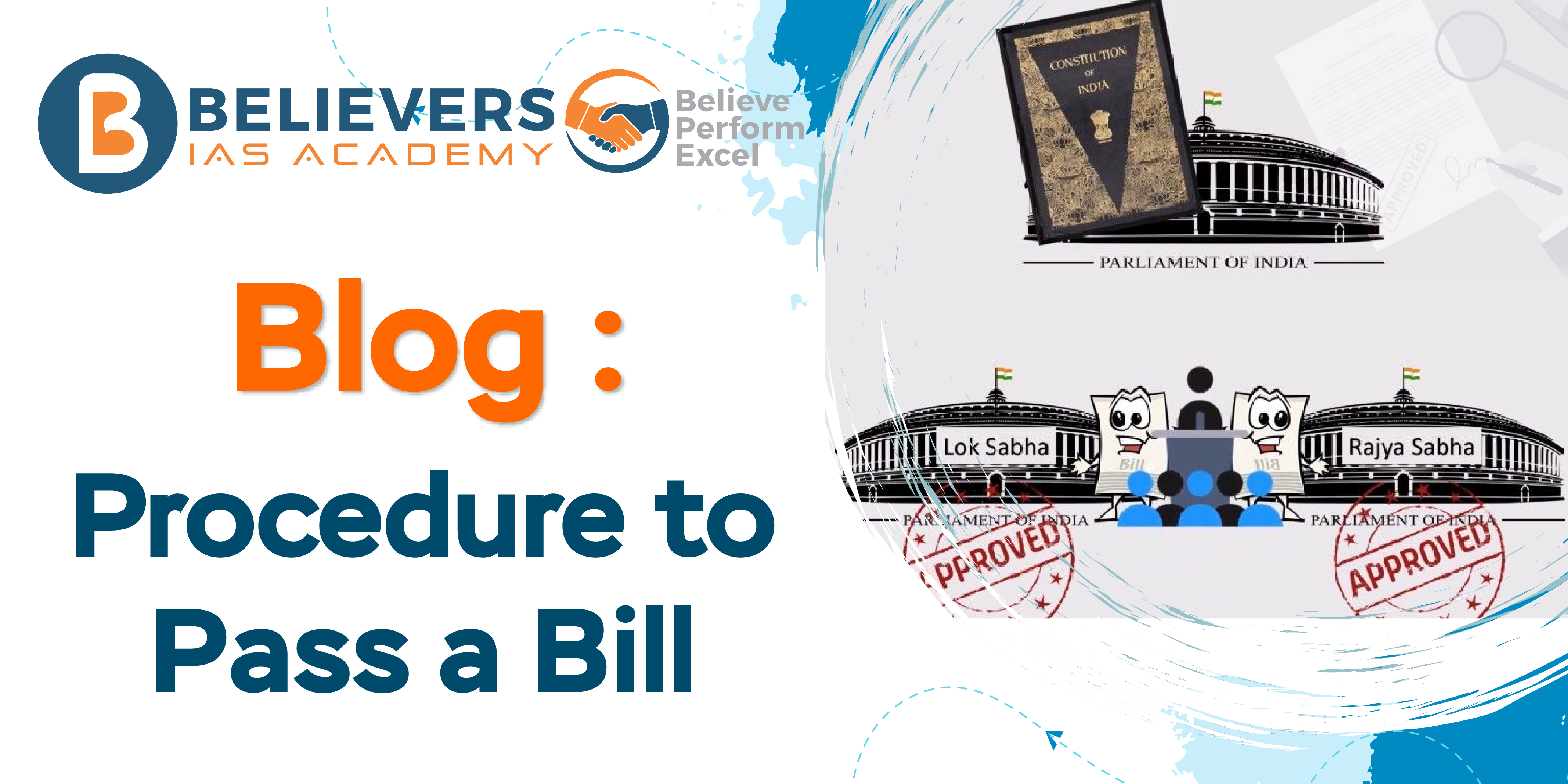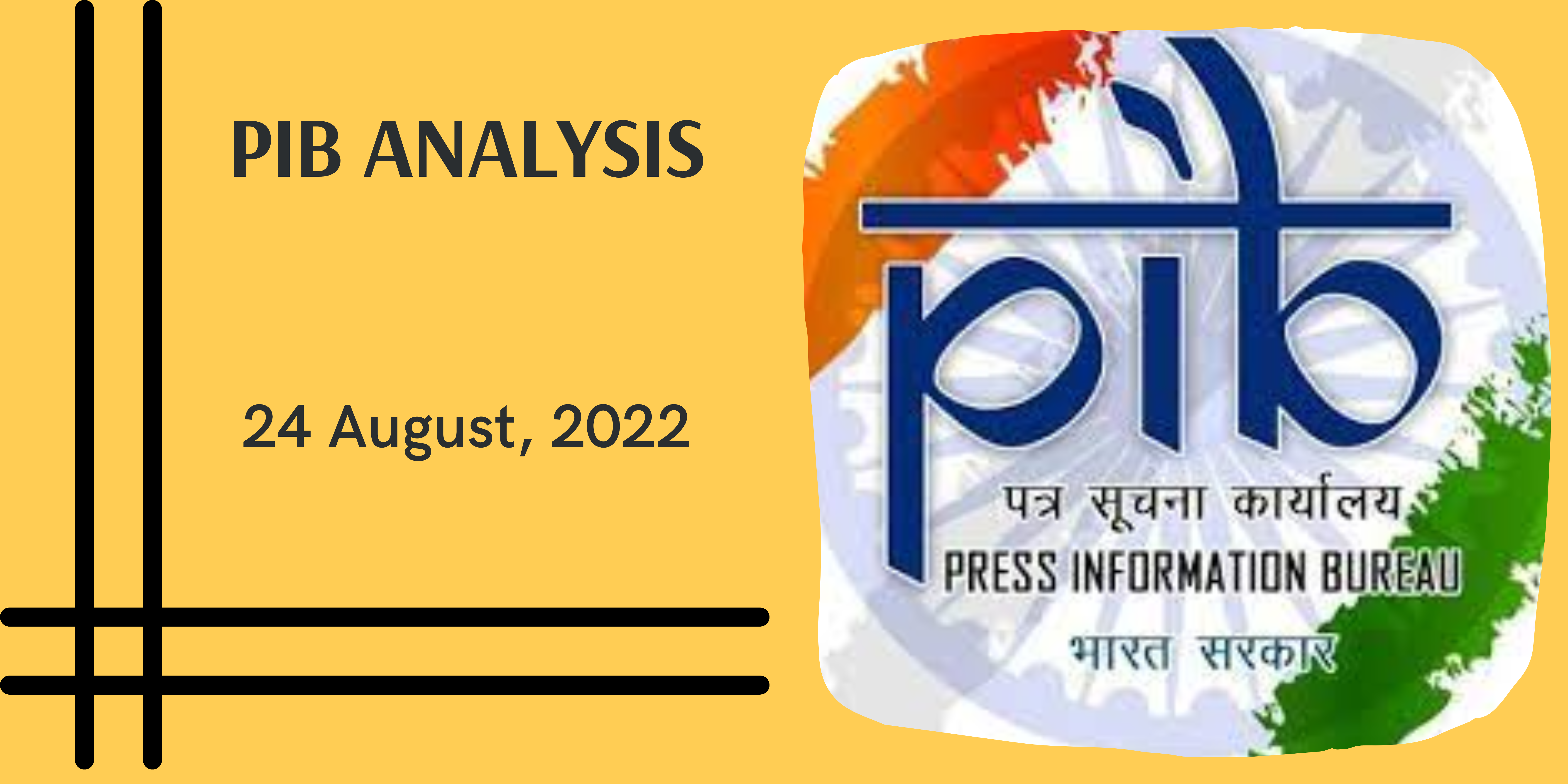Procedure to pass a bill
The introduction, debate, and passage of bills in both chambers of Parliament constitute the legislative process in the Indian parliament. A bill is a suggestion for a brand-new law or an alteration to an already-existing one. To become legislation, the bill needs to be approved by the President and both houses of Parliament (Lok Sabha and Rajya Sabha).
What are the different types of bills?
In the Indian Parliament, there are four sorts of bills that may be introduced:
- Money Bill(Article 110): This legislation covers topics including taxes, spending by the government, and loans. They can only be introduced in the Lok Sabha, and if it approves them, the Rajya Sabha will review them. The money bill is not subject to rejection or alteration by the Rajya Sabha, only suggestions for changes. Within 14 days, it must send the bill back to the Lok Sabha with or without recommendations.
- Finance Bills (Article 117 [1], Article 117[3]): These bills deal with issues relating to taxation and spending by the government. There are three different kinds of finance bills: the finance bill, which contains the yearly budget’s contents; the money bill, which only addresses issues raised by article 110 of the Constitution; and the financial legislation (other than money bills), which covers all other financial issues. The Lok Sabha may or may not accept the Rajya Sabha’s proposals for changes to financial bills.
- Ordinary Bill(Article 107, Article 108): This legislation can be introduced in either chamber of Parliament and cover a variety of topics. They are forwarded to the President for approval after being approved by both houses. Ordinary bills may be amended by the Rajya Sabha, and the Lok Sabha may adopt such suggestions or not.
- Constitution Amendment Bills(Article 368): These bills are presented to change the Indian Constitution’s stipulations. For them to pass, a two-thirds majority of the members present and voting, as well as a majority of each house’s total membership, is needed.
What are the procedures to pass the bills in the country?
- Introduction: When a bill is introduced in either house of Parliament, the procedure gets started. The bill is typically proposed by an MP, and the presiding authority (the Speaker of the Lok Sabha or the Chairman of the Rajya Sabha) approves its introduction.
- First Reading: The initial phase when a bill is introduced is referred to as “First Reading.” The Bill’s aims and title are read out at this time, but there isn’t a thorough discussion of the legislation’s specifics.
- Committee Stage (Optional): The bill may be referred to a parliamentary committee for in-depth review in specific circumstances, particularly for more complicated or significant laws. The committee examines the proposed legislation, gets input from stakeholders and experts, and then delivers a report to the house with recommendations.
- Second Reading: The critical phase of the bill’s deliberation is “Second Reading.” Parliamentarians have the chance to discuss the provisions, merits, and potential issues with the measure. During this phase, amendments to the bill may be suggested and discussed.
- Voting: Following the conclusion of the debates and discussions, the bill is put to a vote. Members vote on the proposed legislation and any amendments. A simple majority is required in both houses to pass the law. , a special majority is necessary for bills proposing constitutional amendments.
- Consideration in the other house: If a bill is approved by one house, it is transmitted to the other for consideration (from Lok Sabha to Rajya Sabha or vice versa). The bill goes through a similar procedure of readings, discussions, and voting, with the second chamber having the option to suggest amendments.
- Resolution of Differences: If there are any differences between the two houses about the terms of the bill, they may be settled through dialogue or by referring the measure to a Joint Committee made up of representatives from both houses.
- President’s Assent: The measure is sent to the President of India for his or her assent once both chambers have approved the final version. The President has the power to accede to the bill, veto it (a power that is rarely used), or send it back for revision. An “Act of Parliament” is a bill that becomes law after receiving the President’s assent.
Joint session of both houses
- Joint Session Defined: In an Indian Parliament joint session, both houses, the Lok Sabha (House of the People) and the Rajya Sabha (Council of States), convene for a special meeting to undertake business jointly.
- Purpose of Joints session: Joint sessions are called under special conditions to break stalemates between the two houses over the passage of a bill. A deadlock develops when a measure is approved by one house but not the other, or when the two houses disagree on some of the bill’s provisions. In certain circumstances, the President of India may call a joint session to break the deadlock.
- President’s Role: The Indian President has the power to convene a joint session but is not required to do so. When choosing whether to call a joint session, the President typically takes the Council of Ministers (the Cabinet’s) recommendation.
- Presiding Officer: The Speaker of the Lok Sabha presides over the proceedings during a combined session. If the Speaker is not available, the Lok Sabha’s Deputy Speaker assumes control.
- Quorum and Voting: One-tenth of the members of both chambers together constitutes a quorum for a joint session. There are representatives from both houses in attendance, and votes are cast by a simple majority. This implies that on a given issue, the side with the most votes wins.
- Results of a Joint Session: If a bill receives a simple majority in a Joint Session, it is deemed to have passed. The joint session’s decision is final, and the bill is regarded as having received the support of both chambers.
- Instances of Joint Sessions: there have been only three instances when joint sessions were convened in India:
- The Dowry Prohibition Act (1961): Aimed at banning the practice of giving and taking dowry during marriages and preventing dowry-related harassment of women.
- The Banking Service Commission Repeal Bill (1978): Intended to repeal the Banking Service Commission Act, which established the Banking Service Commission for recruiting bank employees.
- The Prevention of Terrorist Activities Act (2002): Enacted to strengthen the legal framework to combat terrorist activities more effectively.
What is an ordinance?
- The President of India has the authority to issue ordinances while Parliament is on hiatus and neither the Lok Sabha nor the Rajya Sabha are in session, as stated in Article 123 of the Indian Constitution. An ordinance that has the same weight and effect as a Parliamentary act may be issued if there is a clear and pressing necessity for legislation and the President is satisfied.
- The President’s authority to make ordinances is nevertheless subject to several restrictions. The President is not permitted to promulgate an ordinance that contravenes the Constitution’s provisions or issue an ordinance regarding subjects that call for constitutional amendments.
- Furthermore, an ordinance issued by the President has a limited duration. It will cease to operate if it is not passed by both houses of Parliament within six weeks of its reassembly. In other words, the ordinance must be approved by Parliament to become a permanent law.
- Similar authority to enact ordinances when the state assembly is not in session is granted to the governor of a state at the state level by Article 213 of the Indian Constitution. However, the President must give his or her consent before the Governor can issue an ordinance.




